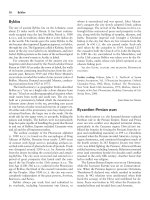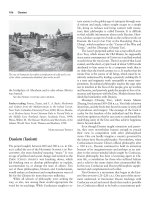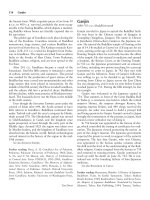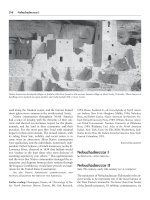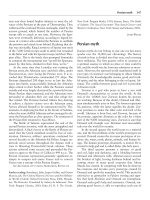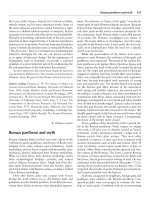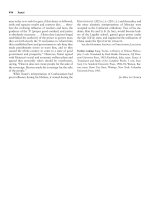Encyclopedia of world history (facts on file library of world history) 7 volume set ( PDFDrive ) 2446
Bạn đang xem bản rút gọn của tài liệu. Xem và tải ngay bản đầy đủ của tài liệu tại đây (227.52 KB, 1 trang )
166
Indian National Congress (1885–1947)
A city view of Benares, India, in 1922. The rich cultural heritage of the Indian people, evident in the scene above, helped fuel the resolve
of India to be independent of British domination and to achieve self-rule through peaceful means.
aghast at this violent path, and the Congress Working
Committee meeting at Bardoli suspended the noncooperation movement seven days afterward. Although
Congress leaders like Subhas Chandra Bose and
Jawaharlal Nehru (1889–1964) as well as a large section of the populace were stunned by the Working
Committee resolution, they abided by the decision.
Gandhi was arrested in March 1922 and given six
years’ imprisonment for treason.
The INC was opposed to the formation of the
Simon Commission in 1927–28, which was constituted
to look into the constitutional reforms and appointed
a committee headed by Motilal Nehru to prepare
a constitution for a free India. Dominion status for
India was the main feature of the Nehru Report. The
All-Party Conference, convened in Calcutta in December 1928, did not agree with the report. Mohammad
Ali Jinnah (1876–1948), the leader of the AIML, also
was against the report because his demands were not
met. The radical wing of the congress, led by Motilal’s
son Jawaharlal, also was opposed to the report. It was
decided to launch civil disobedience for the cause of
purna swaraj (complete independence). The congress
passed the resolution for complete independence in the
historic Lahore session of 1929. The following year
the civil disobedience movement started when Gandhi
launched the salt satyagraha with his famous Dandi
March in March 1930. Gandhi was arrested in May,
and altogether 90,000 people were put behind bars.
The British realized the need for congress participation and initiated a dialogue. As a result Lord Irwin
(1881–1959), the viceroy, signed a pact with Gandhi
in March 1931 by which the civil disobedience movement was suspended, and the congress agreed to join
the Round Table Conference. In the Karachi session of the INC, talks with the British were endorsed.

